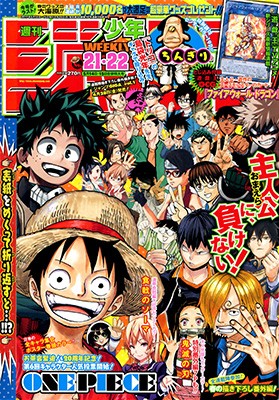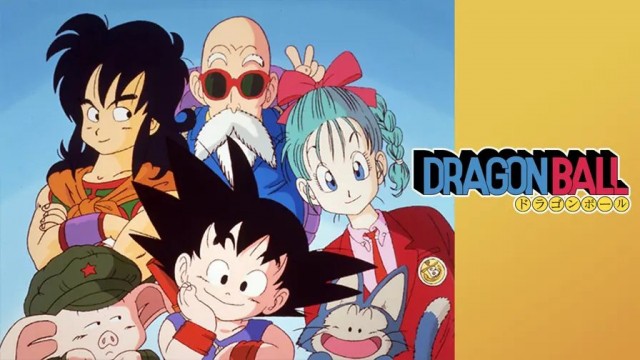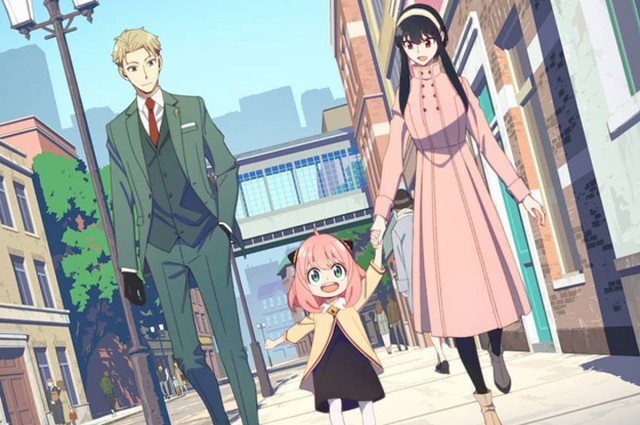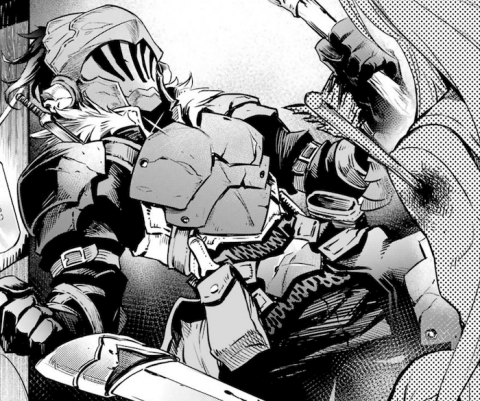The anime adaptation of "Grandpa and Grandma Get Young Again" is set to air this year in 2024, but did you know that this work gained popularity not through publication in a weekly magazine, but through social media? Usually, when we think of anime, we imagine it being adapted as a result of being featured in a weekly magazine and gaining popularity. However, this work has risen to prominence solely through its own merits, without going through such a process. Therefore, when it was announced that this work would be adapted into an anime, fans who had been supporting the series through social media erupted in joy. In fact, the excitement surrounding this work's anime adaptation is due in part to the gradual increase in recent years in the number of manga works that first appeared on social media being adapted into anime. Recently, there has been an increase in the number of manga works that have gained popularity on social media, such as this work, being adapted into anime, and it has been pointed out that the shape of the Japanese anime industry itself is changing. In this article, I would like to use this as an opportunity to explore these recent changes in the anime industry.
The Traditional Manga Industry

As mentioned earlier, in the manga industry, a work needed to be recognized by a weekly magazine or other publication and begin serialization in order to reach a large audience. Therefore, the first hurdle that a manga artist aiming to have their work adapted into an anime had to overcome was to gain the approval of a weekly magazine's editorial department and have their work serialized.
Weekly Magazines Discover and Develop Artists

Weekly magazines are aware that they have a major influence on manga artists' lives, and they foster a collaborative relationship between artists and editors. It's important for weekly magazines not only to discover artists, but also to develop them through serialization. Through this collaborative effort between editorial staff and artists, new ideas are born, leading to better manga.
Understanding Reader Opinions through Popularity Poll

Weekly magazines also regularly conduct reader surveys to ensure their readers' opinions are conveyed directly. As a result, manga works published in weekly magazines are developed into better works through the collaborative efforts of editors, manga artists, and readers. Weekly Shonen Jump, in particular, is known for the fierce competition for popularity between its titles.
Manga Artists Flock to Cities

Traditionally, manga artists needed an environment where they could meet closely with the editors serializing their works in weekly magazines. As a result, living in rural areas was not an option for manga artists, and they generally lived in urban areas. Until now, the manga industry has placed manga artists born in rural areas at a disadvantage.
The Uniqueness of This Work

Understanding these fundamentals of the manga industry makes it clear how groundbreaking this work's anime adaptation was. From here, I would like to explain why this work's anime adaptation was so different, based on the industry's conventional wisdom. This work has undergone an unusual history, and could even be called a new era of anime, so be sure to check it out.
Breakthrough Through Social Media

This series broke through not through weekly magazines, but through social media. Therefore, it's likely that the serialized content published on social media was generally not overseen by an editor. Even if it was, it likely only began midway through the series, once the series' popularity had solidified. Therefore, it's likely that the original setting and initial production of this work were created without any involvement from an editor.
The author debuted in Aomori

Furthermore, this work's author, Shincho-sensei, made his debut as a manga artist in Aomori. As mentioned earlier, manga artists aiming to debut need to have detailed discussions with editors, so they need to live in urban areas. However, since Shincho-sensei primarily published his work on social media, he didn't need to communicate closely with editors. This likely allowed him to continue his career as a manga artist even outside of urban areas.
Unprecedented Features

As such, it's clear that this work's creator, Shincho, is a manga artist whose activities have centered primarily on social media, and as such, he has a unique background not seen in traditional manga works. Changes that would have been unthinkable in the manga industry 10 years ago are occurring in recent times. And these changes may have the power to change the manga industry going forward.
Will Social Media Change the Manga Industry?

Looking at this work's unique history, we can see that social media plays a major role. Many works like this gained attention not through weekly magazines but through social media, and gained momentum enough to be adapted into anime. From here, I'd like to briefly introduce the changes that social media is bringing to the manga industry.
The traditional dominance of weekly magazines is beginning to crumble.

It's said that the rise of social media is currently causing the traditional dominance of weekly magazines to crumble. In fact, the circulation of the once-popular Weekly Shonen Jump magazine is shrinking, reflecting the current social climate in which people no longer need to go out of their way to buy weekly magazines to enjoy manga. While Weekly Shonen Jump is easy to purchase, it's quite large, making it difficult to carry around and enjoy manga. However, with social media, you can easily enjoy manga anywhere.
You can now debut even if you're not in a city

And above all, a major advantage of posting on social media is that you don't need an editor's intervention. While having an editor's advice is reassuring, it requires you to travel to Tokyo or elsewhere. While this may be less of a burden for manga artists living in the Tokyo metropolitan area, it presents a major disadvantage for artists living in the Tohoku region, as in this case. However, with social media, you don't have to meet with an editor, so you can easily publish your manga.
SNS Easily Reflects Reader Opinions

SNS also offers an advantage over Weekly Shonen Jump in terms of its close relationship with readers. Since SNS was originally designed for user interaction, readers' opinions reach the author directly. This means that readers' requests can be conveyed more directly to the author than through surveys or popularity rankings like those used by Weekly Shonen Jump. This is a major advantage, isn't it?
What are the disadvantages of manga originating from SNS?

At first glance, social media seems to offer only advantages, as it has made it easy to publish works even if you're not in a city, and readers' opinions have reached manga artists more directly. However, upon closer consideration, it's also true that there were benefits unique to the old weekly magazine format. From here, I'd like to consider the disadvantages of manga works originating from social media.
The saturation of manga leads to a bias toward catchy works

Since anyone can easily post manga works on social media, a huge number of manga works are posted there every day. In such a saturation-prone social media environment, people seek out more catchy works. Unlike weekly magazines, where serialized works are almost forced upon you, you can move on to the next work immediately. Therefore, when casually browsing, you tend to come across catchy works that catch your eye.
The Populist Trend of Manga Works

For this reason, readers tend to have more control than traditional manga works. As a result, manga works posted on social media tend to be more conscious of their readers' opinions, which is both an advantage and a disadvantage. Conversely, works that appeal to the general public tend to gain popularity and remain strong, making it difficult to depict the author's unique personalities or plot twists that seem a little uninteresting now but later become a powerful stab. This tendency to pander to the masses is called populism in political terms, and it seems that this same populism is occurring in the manga industry as well.
Can manga developed with a long-term perspective survive?

In fact, just as Dragon Ball is famously unpopular in its early days, it's often the case that famous manga that have made a name for themselves in the future were initially unpopular. This is why editors take a long-term view and nurture the manga's appeal, ultimately developing it into a work that is universally recognized. However, on social media, where it's easy to shift to a different work, many manga artists quickly move on to serializing another work if it doesn't gain popularity. Therefore, it can be said that manga that have been nurtured for the long term tend not to survive on social media.
Disadvantages of Rework

Social media has the advantage of allowing a wide range of people to easily enjoy and post manga works. However, it also has the disadvantage of eliminating the leisurely development of a work, a style unique to the good old weekly magazines, where a single work can be carefully developed without being bound by the opinions of others.
Weekly Magazines Turn to Digitalization

While social media has its pros and cons, the circulation of weekly magazines has already declined significantly, suggesting that the times are shifting toward social media-based manga serialization. For this reason, publishers of weekly magazines and other publications are already turning to digitalization for their manga.
The Future of Good Old Manga Culture

We are currently in a transitional period, as manga culture, centered around the good old weekly magazines, transitions to an era of internet distribution, including social media. Beginning with the works of Osamu Tezuka, Japanese manga culture has been embraced worldwide. How will it progress with the digitalization of the digital age?
The Anime Industry Itself is Growing

At the very least, the anime industry itself is showing signs of growth, making an impact that more than offsets the gloomy news of declining circulation of weekly magazines like Weekly Shonen Jump. There's no doubt that Japan's anime and manga industries will continue to grow significantly in the future.
Easier Overseas Expansion

Social media, unlike weekly magazines, offers the advantage of easily reaching people overseas. In recent years, many manga titles have been well-received overseas, making the digitalization of manga titles an essential element in exporting Japan's manga industry.
The Warring States Period Begins

This digital trend is shaking the throne of Weekly Shonen Jump, which has reigned supreme in the Japanese manga industry. Today, many works, like this one, are gaining popularity without being serialized in a weekly magazine. The days when weekly magazines held such overwhelming power in the manga industry have come to an end.
Aim to dominate the open market!

The coming era will see various companies and manga artists competing fiercely to become the new dominant force in this open market. Perhaps, due to the enormous diversity, no single dominant force will ever be determined. In a sense, a liberalized manga industry could lead to the creation of more free-spirited works.
The Age of Manga

With the rise of social media, the era of the traditional weekly magazine dominance has come to an end, ushering in an era of diverse publishing methods. The manga industry, lacking a dominant player, has truly entered the age of manga. I expect that many works will be adapted into anime solely through social media, without first being serialized in a weekly magazine, so keep an eye out.
Summary
What did you think? This time, I used the unique history of "Grandpa and Grandma Rejuvenate" as a starting point to discuss the future of the manga industry. While social media has its drawbacks for manga, the benefits far outweigh the drawbacks. I believe that social media will continue to provide us with a variety of works in the future, so I hope you will continue to use social media to find works that you like.




